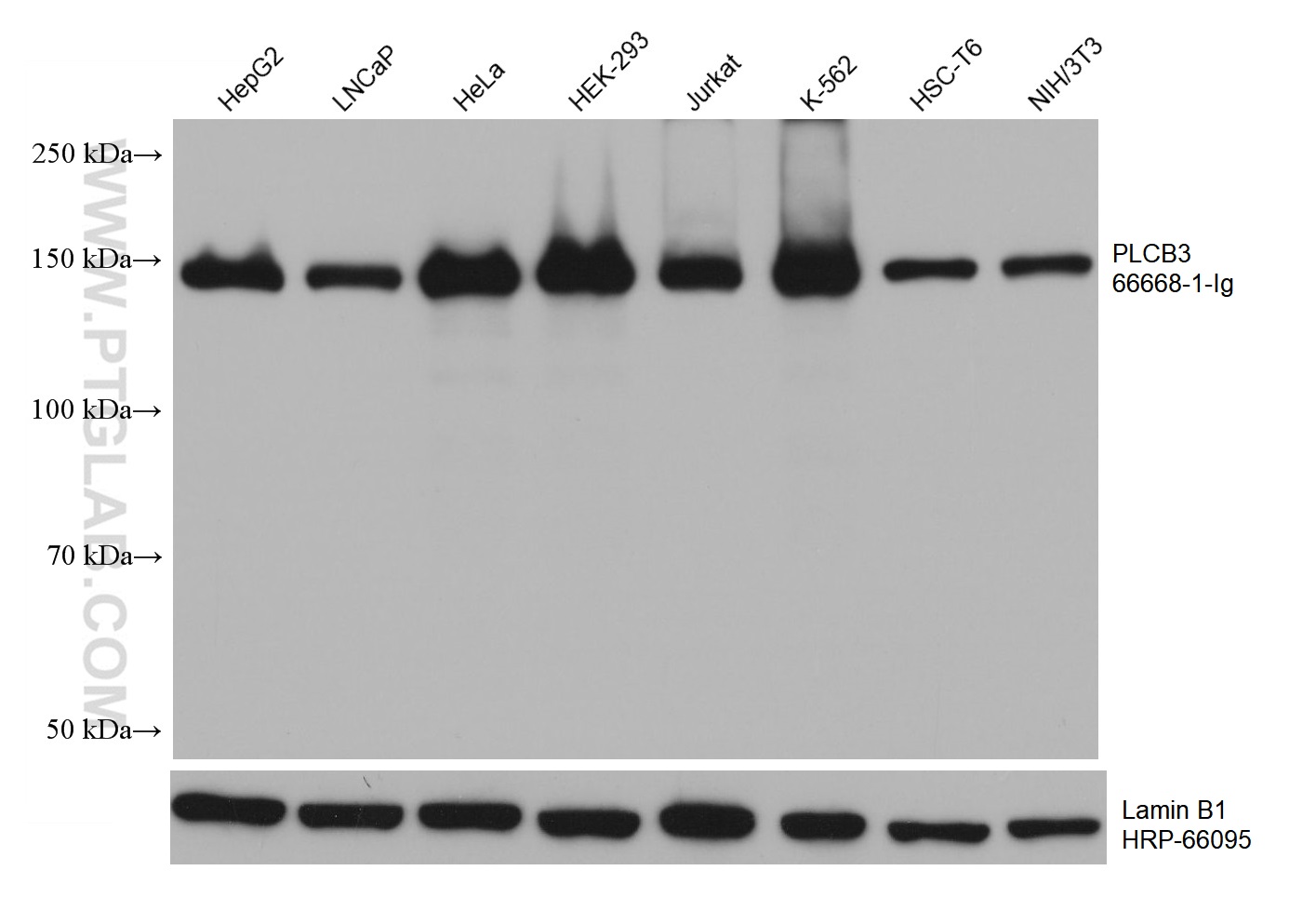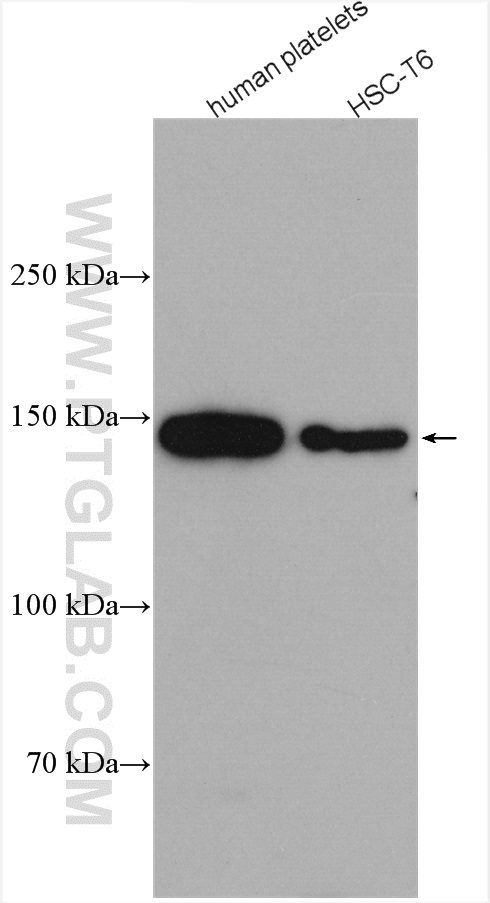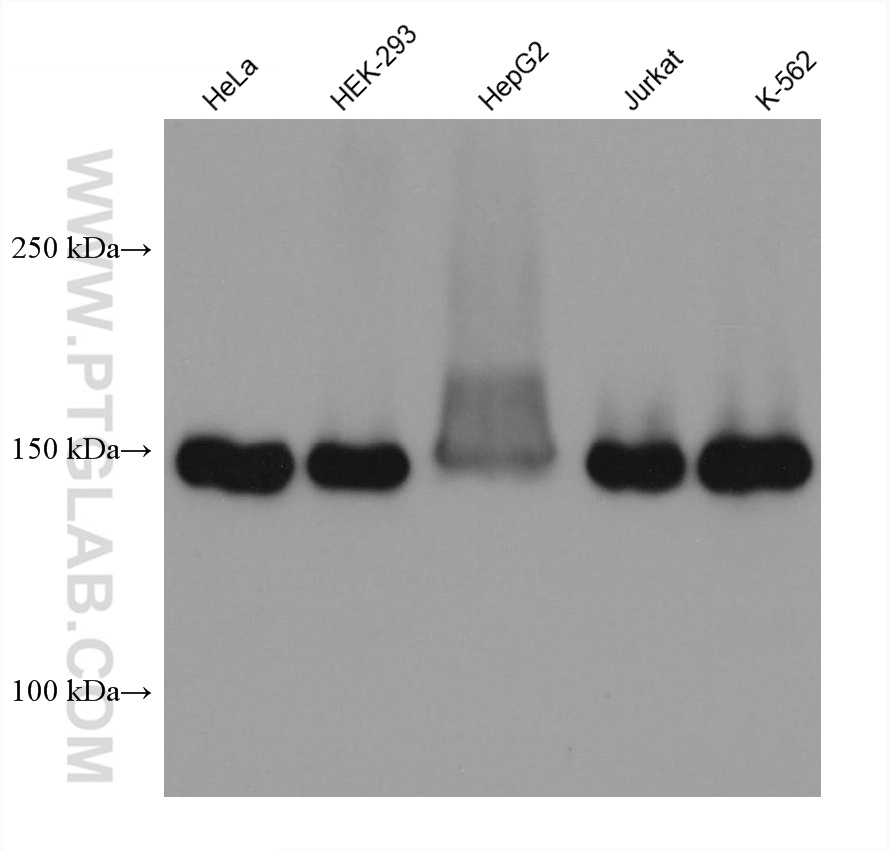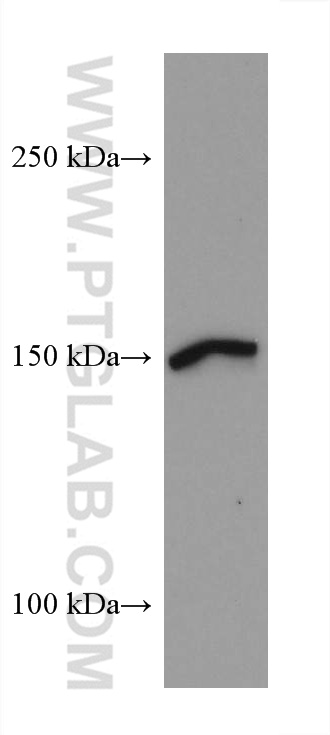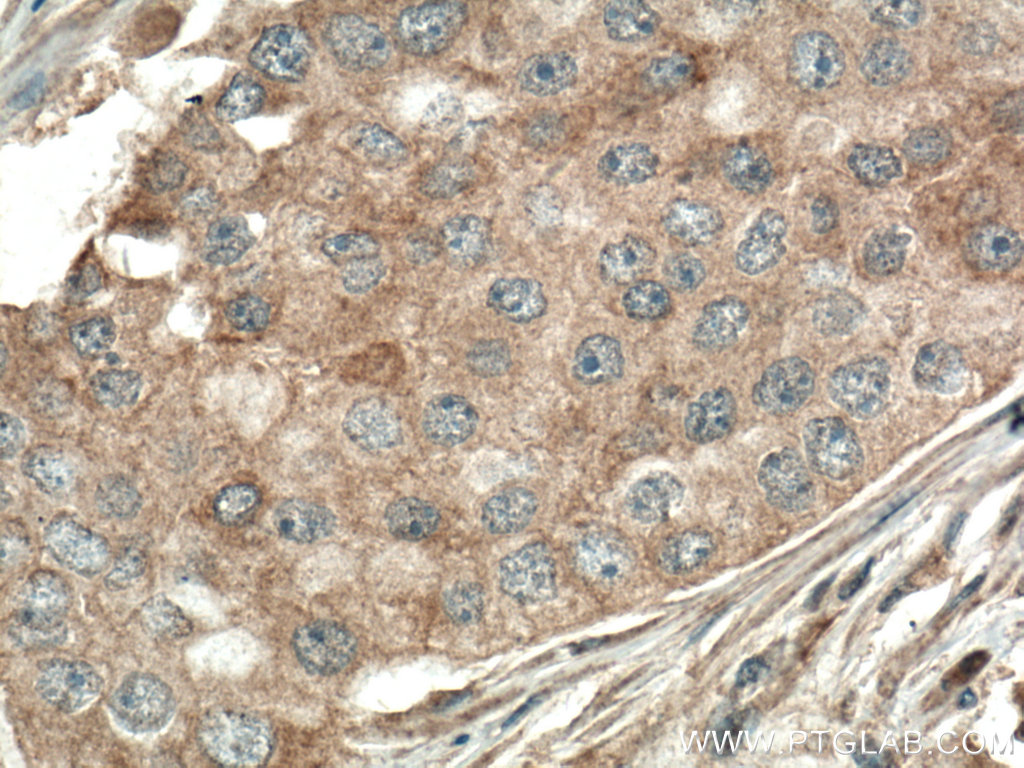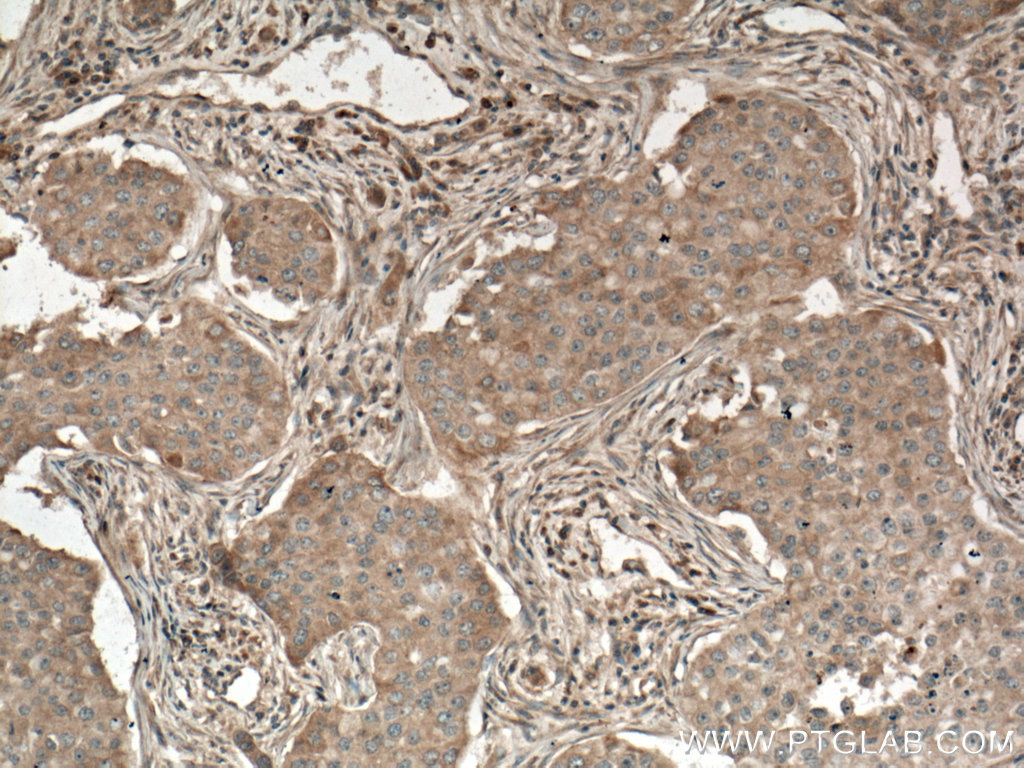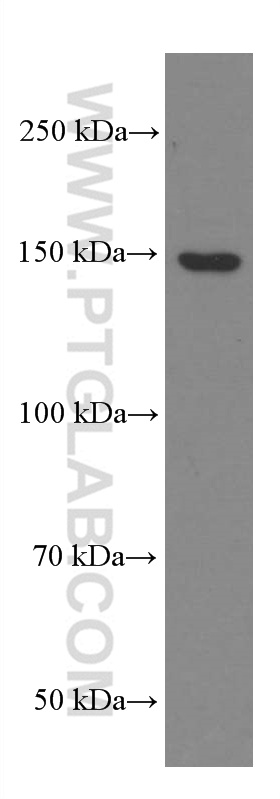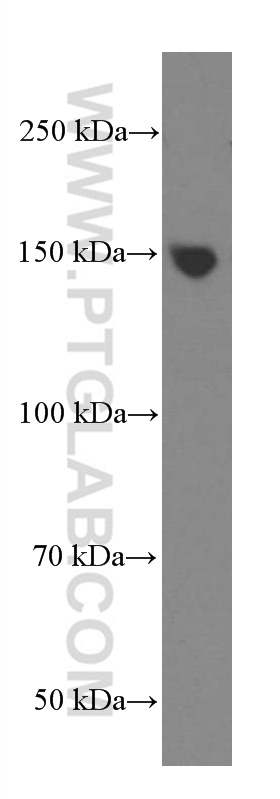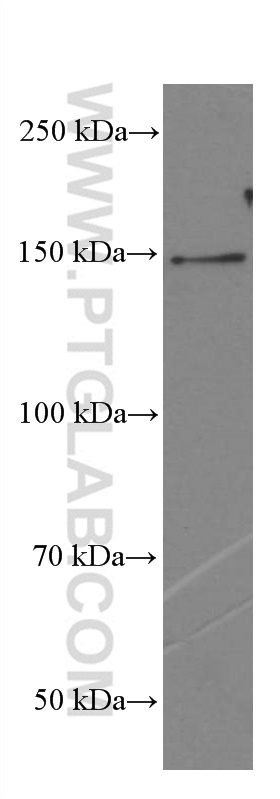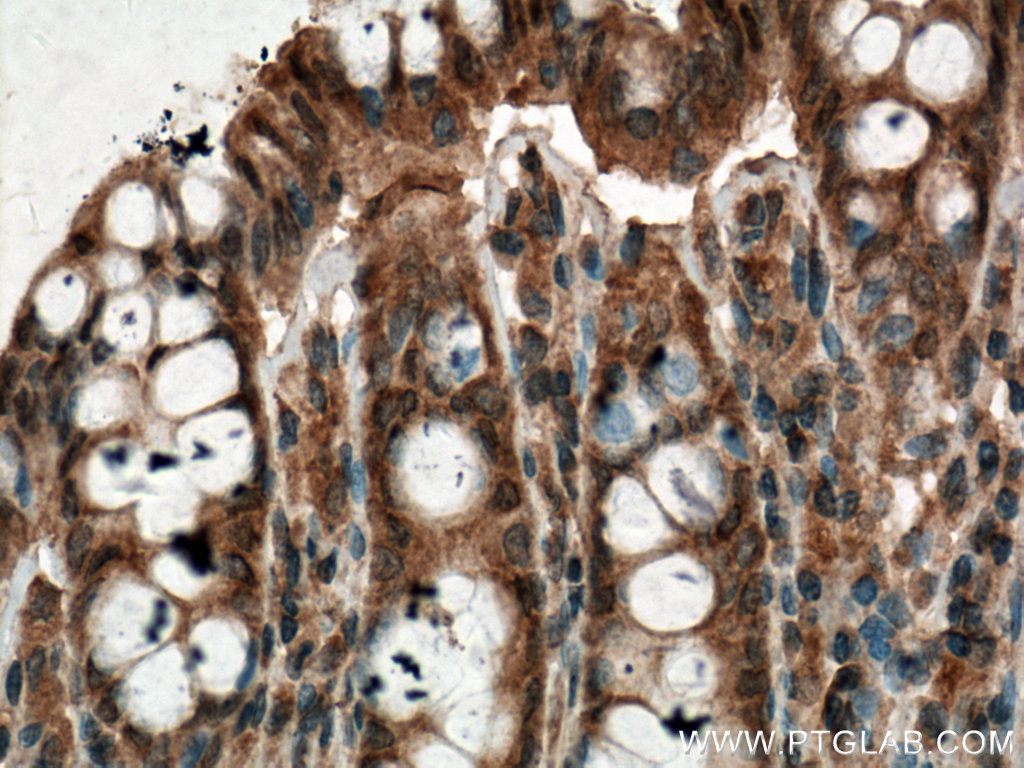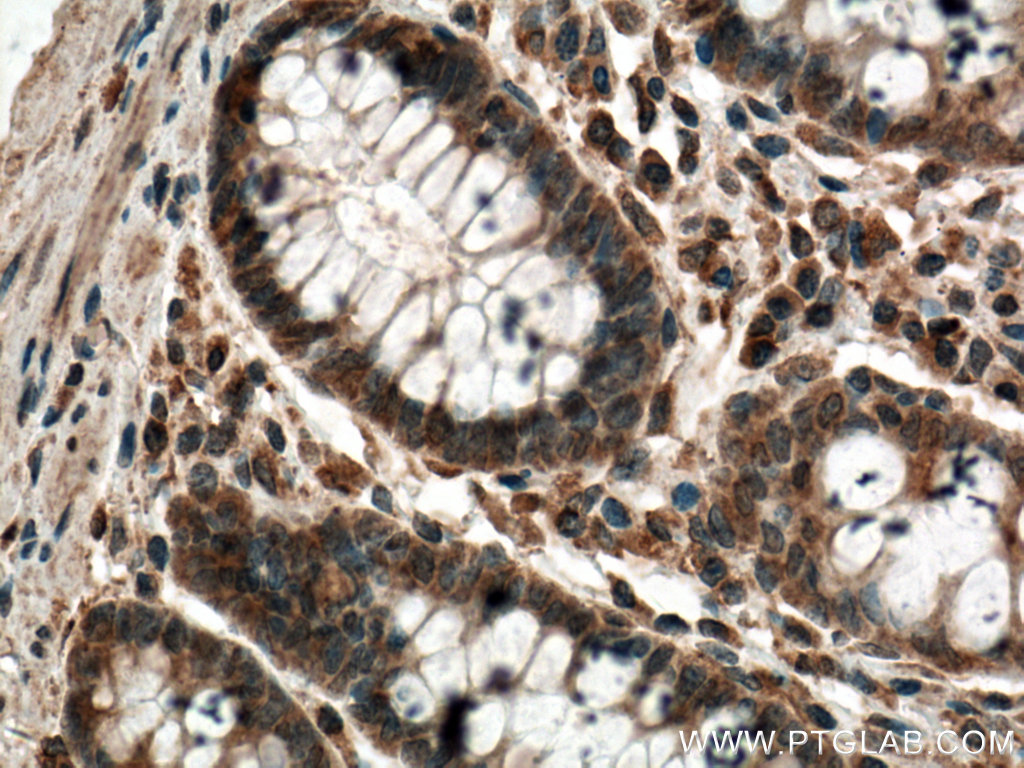验证数据展示
产品信息
66668-1-PBS targets PLCB3 in WB, IHC, Indirect ELISA applications and shows reactivity with human, mouse, rat samples.
| 经测试应用 | WB, IHC, Indirect ELISA Application Description |
| 经测试反应性 | human, mouse, rat |
| 免疫原 | PLCB3 fusion protein Ag15845 种属同源性预测 |
| 宿主/亚型 | Mouse / IgG1 |
| 抗体类别 | Monoclonal |
| 产品类型 | Antibody |
| 全称 | phospholipase C, beta 3 (phosphatidylinositol-specific) |
| 别名 | Phospholipase C-beta-3, Phospholipase C beta 3, Phosphoinositide phospholipase C-beta-3, EC:3.1.4.11, 1-phosphatidylinositol 4,5-bisphosphate phosphodiesterase beta-3 |
| 计算分子量 | 1234 aa, 139 kDa |
| 观测分子量 | 150 kDa |
| GenBank蛋白编号 | BC142681 |
| 基因名称 | PLCB3 |
| Gene ID (NCBI) | 5331 |
| RRID | AB_2882022 |
| 偶联类型 | Unconjugated |
| 形式 | Liquid |
| 纯化方式 | Protein G purification |
| UNIPROT ID | Q01970 |
| 储存缓冲液 | PBS Only |
| 储存条件 | Store at -80°C. The product is shipped with ice packs. Upon receipt, store it immediately at -80°C |
背景介绍
PLCB3 is a member of the phosphoinositide phospholipase C beta enzyme family that catalyze the production of the secondary messengers diacylglycerol and inositol 1,4,5-triphosphate from phosphatidylinositol in G-protein-linked receptor-mediated signal transduction. Six subfamilies of PLCs (B, G, D, E, Z and H) constitute part of ubiquitous signaling cascades that translate hormonal signals into intracellular events, leading to alternations in cell function. PLCB isoforms 1-4 are stimulated by G-protein activation (Gαq/11 and/or Gβγ). Independent of its enzymatic activity, PLCB3 inhibits the proliferation of hematopoietic stem cells (HSCs) and myeloid cells.
